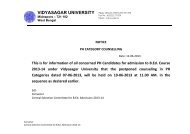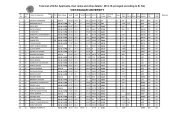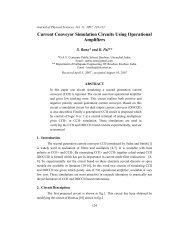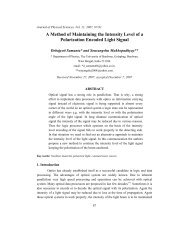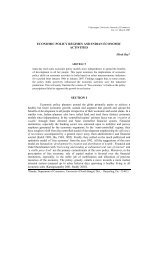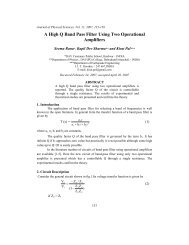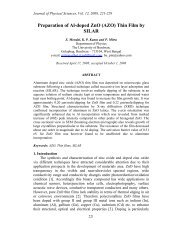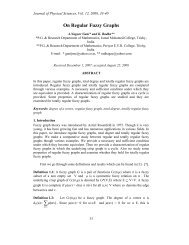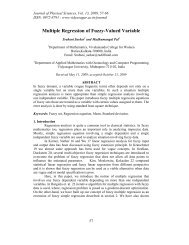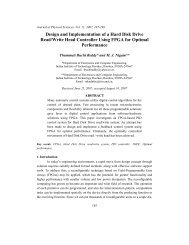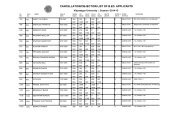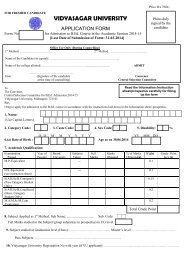VIDYASAGAR UNIVERSITY JOURNAL OF COMMERCE
VIDYASAGAR UNIVERSITY JOURNAL OF COMMERCE
VIDYASAGAR UNIVERSITY JOURNAL OF COMMERCE
You also want an ePaper? Increase the reach of your titles
YUMPU automatically turns print PDFs into web optimized ePapers that Google loves.
CORPORATE RESTRUCTURING THROUGH MERGERS AND ACQUISITIONS: A CASE STUDY<br />
So, a decreasing trend in corporate profitability is evident so far as ROI is concerned. The<br />
reason behind this type of opposite image in corporate profitability can be identified by<br />
studying the position of capital structure of the company during the period under study,<br />
which is as follows:<br />
Table – 2 :<br />
(All figures are in Crores)<br />
Sources of 2004-05 2003-04 2002-03 2001-02 2000-01 1999- 1998-99 1997-98 1996-97 1995-96<br />
funds<br />
2000<br />
Capital 1086.76 966.4 962.66 962.55 196.82 196.82 165 165 150 150<br />
Reserves & 11813.2 7394.16 6320.65 5632.41 1092.26 952.69 143.33 101.75 31.88 6.75<br />
surplus<br />
Deposits 99818.77 68108.58 48169.31 32085.11 16378.21 9866.02 6072.94 2629.02 1347.6 727.94<br />
Borrowings 33544.5 30740.24 33178.53 48681.21 1032.79 491.47 199.89 192.23 92.99 210.95<br />
Other 22172.11 18940.17 19129.12 17598.18 1036.51 565.63 400.52 191.43 159.4 61.62<br />
Liabilities &<br />
Provisions<br />
Capital 168435.34 126149.55 107760.27 104959.46 19736.59 12072.63 6981.68 3279.43 1781.87 1157.26<br />
Employed<br />
The above scenario indicates that the amount of Capital Employed has increased rapidly<br />
over the study period but the concerned bank failed to utilize its assets properly. So the<br />
improper utilization of company’s assets may be responsible for lowering the ROI over the<br />
study period. Hence, even if the profitability of the company has amazingly been improved<br />
in the post-merger period from shareholder’s point of view, the overall performance ability<br />
measured in terms of ROI has been declined considerably after the merger. The modern<br />
concept of measuring corporate surplus (i.e., EVA) is also supporting this argument.<br />
In the case of EVA is also found a rapid declining trend in corporate surplus. The average<br />
EVA of the pre-merger period was Rs.74.56 crores (approx) whereas the average EVA of<br />
the post-merger period is Rs. (–) 97 crorers. It is the indication of the deterioration of<br />
corporate surplus during the study period. In this context, the most worth-mentioning point is<br />
that, under traditional concept of profitability measures, EPS and ROI have shown positive<br />
profits during the year, 1995-96, 2001-02 and 2002-03. But in these years corporate value<br />
has been deteriorated indicating negative EVA values as per the modern concept of<br />
profitability measurement. Hence, a question may be raised regarding the suitability of the<br />
techniques used for measuring Corporate Performance.<br />
86 Vidyasagar University Journal of Commerce



